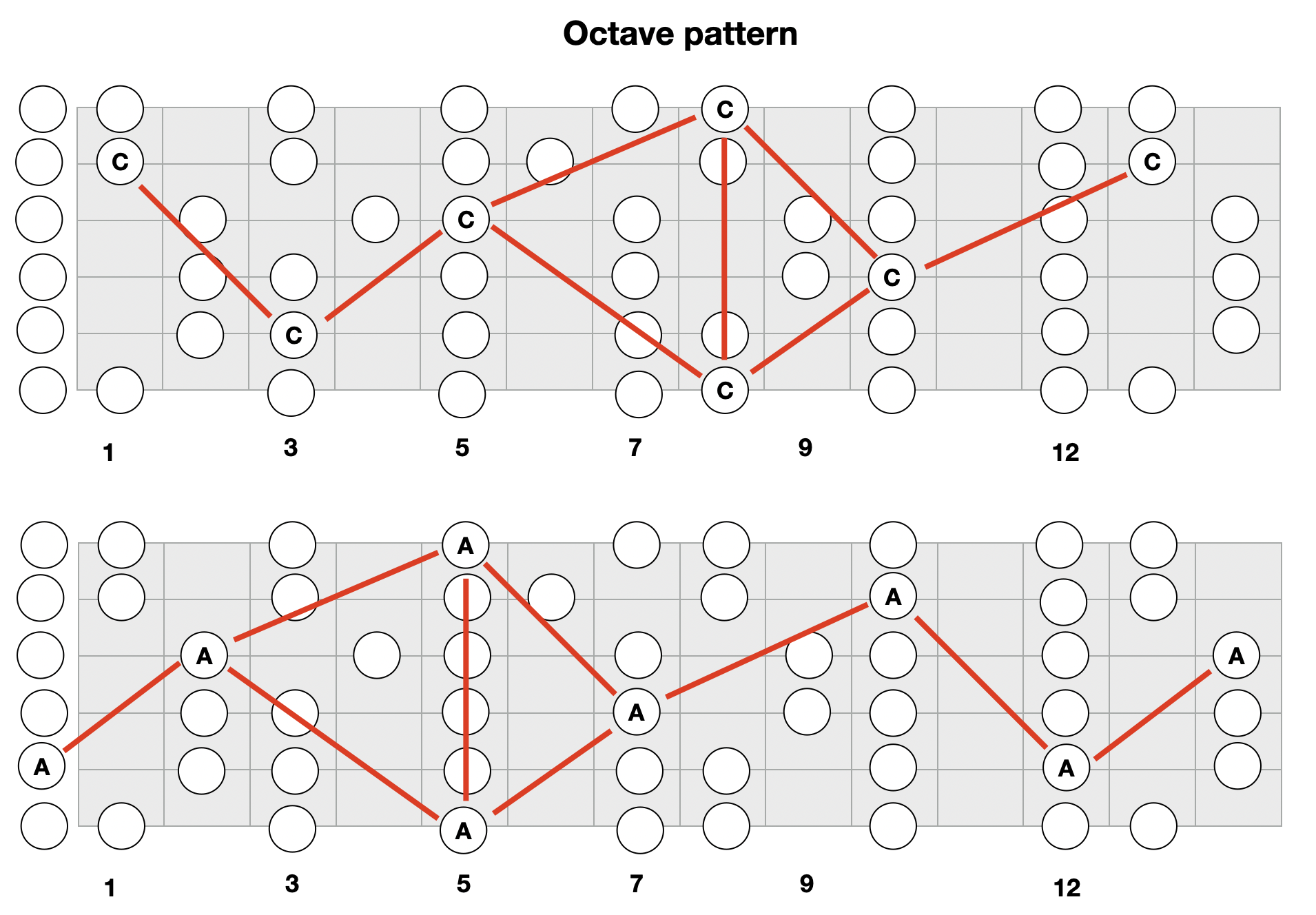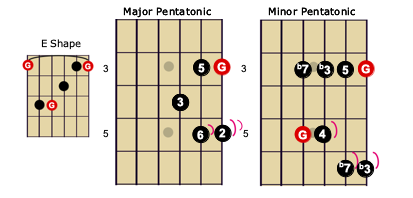Home › Forums › Active Melody Guitar Lessons › Caged system lesson
Tagged: caged Quick way
- This topic has 17 replies, 6 voices, and was last updated 1 year, 3 months ago by
 Charles R.
Charles R.
-
AuthorPosts
-
-
August 26, 2023 at 9:27 am #349897
Greetings from Québec City !
I am finishing up the caged system course and have a question, if you don’t mind. Is there a « quick way » of figuring out which chord you play in any of the shape ? For example, if I play the C shape at the 5th fret, how can I rapidly figure out it is a F chord ? Or is this mentioned somewhere in the lesson and I just missed it…. Thanks in Advance for helping me out ! have a great day !.
-
August 26, 2023 at 10:34 am #349900
Quick way ..is you need to know the notes on the strings, and where the root notes are for a given chord..example c shape chord is on the a string, g shape on the e strings, etc..
-
August 28, 2023 at 7:59 am #349959
Quick way ..is you need to know the notes on the strings, and where the root notes are for a given chord..example c shape chord is on the a string, g shape on the e strings, etc..
Txs Gumpire ! This helps!
-
-
August 26, 2023 at 11:20 am #349901
Salut Denis!
The most (only?) important thing in the CAGED “shapes” is the relative position of the root notes:
C shape: roots on the 5th and 2nd string
A shape: roots on the 5th and 3rd string
G shape: roots on the 6th, 3rd and 1st string
E shape: roots on the 6th, 4th and 1st string
D shape: roots on the 4th and 2nd string
That’s really all there is to it.Cordialement,
JM-
August 28, 2023 at 8:07 am #349960
Bonjour Jean-Michel,
sincere thanks for a thorough response, printed the diagrams and posted them straight on my wall…. just learning my way around this website, I realize now I should have checked the Forum first re: this topic. But thanks for re-posting, this is good stuff !!
-
-
August 26, 2023 at 11:41 pm #349911
Yes, knowing the 6th, 5th and 2nd string root notes is an easier way. The video below will help you with the fretboard, some of it is used in the course but this is the whole video from YouTube. If you know some of your 1,4,5 progressions in any key such as (C,F,G) (A,D,E) (G,C,D) etc. then you can locate these notes easily by going horizontally across the fretboard with the 6th, 5th and 2nd strings and down the frets. The C Shape will join to the 2nd string, the A Shape will join to the 5th string and the E Shape will join to the 6th string. The E, A and C shapes are the more common shapes. A good way to start making music and using these concepts straight away while learning the fretboard are Microlessons Ml056 and ML049. Also Ep440. You will be surprised how much coverage of the fretboard you can make with the different combinations on these 3 strings using the shapes (EAA, AEE, ECC, CEE etc with a 1-4-5 progression. Attached is a pdf which complements the ‘Know the Fretboard’ vlog.
-
August 28, 2023 at 8:12 am #349961
Wow, many thanks to you Laurel for the info ! I already know the notes on the 6th and 5th fairly solid but still working on the 2nd ! This gives me one more reason to learn my 2nd, and fast ! Will dive into the video today. Cheers.
-
-
August 27, 2023 at 3:01 am #349916
Here are two more diagrams for you (I don’t know how many times I have posted them already!):
Here are the basic chord shapes reduced to their roots:If the root is an Eb note, the chord is an Eb major; if it is a G note, the chord is a G major., etc.
And here is how the shapes connect on the fingerboard: CAGED, or AGEDC, or … -
September 29, 2023 at 11:24 am #352243
First time to comment here, so hopefully I’m not out of order. I just wanted to say that the A shaped barre chords have bugged me for many years! But Mr ActiveMelody❤️ has shown me a very easy, simple fix! Use the pinky instead of ring finger! My pinky is much more flexible! So now I can play the C barre (A shaped) without having to stretch out fingers 2,3,& 4 (aka middle, ring, & pinky) on my left hand to get a good & clear sound!!! It’s the little things!
-
November 6, 2023 at 9:23 pm #355782
Thank you for the diagrams. I have known these basic chord shapes where the roots were for some years but never saw them in diagram form. Where I get stuck is if I want to use the E shape for example which of the five minor pentatonic patterns do I use with the E shape? I have the same problem with each of the chord shapes. I know there is some formula that I need to know which will allow me to continue on with my fingerstyle improvisation, but I don’t know what it is.
I can take a shape, let’s say the C shape and I can move it around to play a 1, 4, 5 pattern with the same shape or any of the other shapes but again if I want to improvise from the shape I am absolutely lost.
This is my first forum response or question so please let me know if I am tagging onto something where I should be doing something else or placing this somewhere else.
Thanks for any help you can provide.
Chuck -
November 7, 2023 at 2:20 am #355797
Hi Chuck, It is good question, been there myself. Once you can relate to how the CAGED shapes, (eg) major and minor pentatonic scale patterns and how they interlock with each other it enables you to see the ‘Big Picture’ of the fretboard (File attached), it then helps you focus on the parts of. A practical start would be to look at ep471 where Brian uses the E,A and C shapes and Major and Minor Pentatonic Scales (Brian uses partial patterns) this is a good one to start improvising on your own with (worksheet attached).
Another to compare is Ep 530 where Brian uses the E and C Shapes but does a combination from the G and A Shapes for the Major and Minor Pentatonic (visuals on lesson). I think this covers the fundamentals of your question to help you get a heads up now.
As for a formula I will leave that for others to comment.
-
November 7, 2023 at 4:27 am #355807
The “octave pattern” tells you where the occurrences of any note are on the fretboard.
For example in my earlier reply you will find all the C notes. It is something that you must be able to “see” instantly.But what you do with these notes depends on the context.
– If C is the root of a C major triad in root position, then fine: since you know that a C major triad consists of (R, 3, 5), you can immediately map those intervals on the fretboard using any of the available C notes and you’ll be playing a C major triad.
– If it is the tonic of minor pentatonic scale, then fine: since you know that the minor pentatonic scale is T b3 4 5 b7, you simply play these intervals any way you want starting from any of the available C notes and you’ll be playing a C minor pentatonic scale.
– If it is the tonal center of a C mixolydian scale, then fine: since you know that a mixolydian scale consists of T 2 3 4 5 6 b7, you simply play these intervals any way you want starting from any of the available C notes and you’ll be playing a C mixolydian scale
– etc.Now, if the next chord that comes along is an F chord and you want to follow the chord change, then you simply have to locate the closest F note in the neighborhood of the current C note and consider that F note to be the tonic of your nec scale (e.g. an F major pentatonic: T 2 3 5 6).
In other words, don’t just memorize patterns but know and understand what you are playing; also, know the intervals and how to play them on a guitar. I think that’s the “formula” that will help you best.
-
November 7, 2023 at 11:01 pm #355846
Thank you for your help. I will work on what you have said. I have a better understanding now and will also go back and study EP471.
-
November 7, 2023 at 11:17 pm #355847
I have started studying the diagrams, minor and major pentatonic scale patterns and these are most helpful. Between the two responses I have gotten so far, I think I am beginning, well just beginning, to see how this CAGED system and the scales work together.
Thank you both very much for your responses.
Now back to studying all of this and lesson EP471
Chuck -
November 24, 2023 at 11:12 pm #356417
After watching learning the fretboard where I picked up the A shape uses Pattern 4 and the E shape uses pattern 1 I started wondering what patterns are used with the C shape, G shape, and D shape?
I would appreciate it if someone could tell me the patterns that go with the C,G, and D shapes.
The information provided has been very helpful. Thank you all for your help and continued support.
Chuck -
November 24, 2023 at 11:12 pm #356418
After watching learning the fretboard where I picked up the A shape uses Pattern 4 and the E shape uses pattern 1 I started wondering what patterns are used with the C shape, G shape, and D shape?
I would appreciate it if someone could tell me the patterns that go with the C,G, and D shapes.
The information provided has been very helpful. Thank you all for your help and continued support.
Chuck -
November 26, 2023 at 6:59 pm #356480
Hi Chuck,
You will find them in the above 2nd attachment, although there is a lot of info on one page. So I have attached a more simplified version of just the full patterns of the pentatonic scales to C-A-G-E-D. -
November 27, 2023 at 10:13 pm #356504
Thank you Laurel C. This is very helpful. Now I see the whole patterns and the shapes that go with them. I don’t know how I missed them up above but I did so this makes everything crystal clear.
This was the first time I used the forum and I have to say it will not be my last. I appreciate how everyone that responded was kind and not one put down did I get. I know I can ask simple questions when it comes to trying to understand but you all have been very helpful and understanding of my problem in understanding the CAGED shapes and corresponding major and minor pentatonic scales.
I get it now!
-
-
AuthorPosts
- You must be logged in to reply to this topic.


